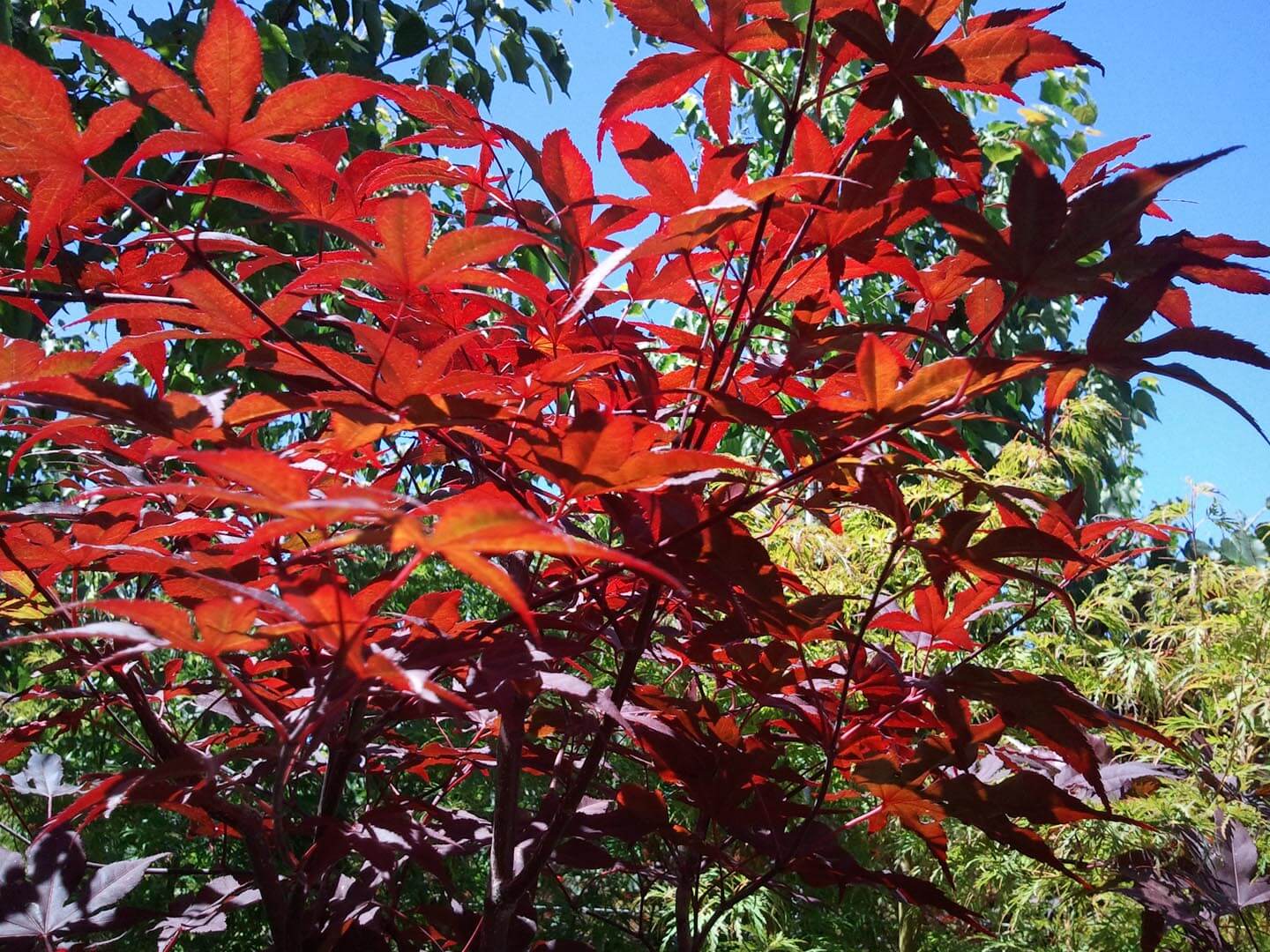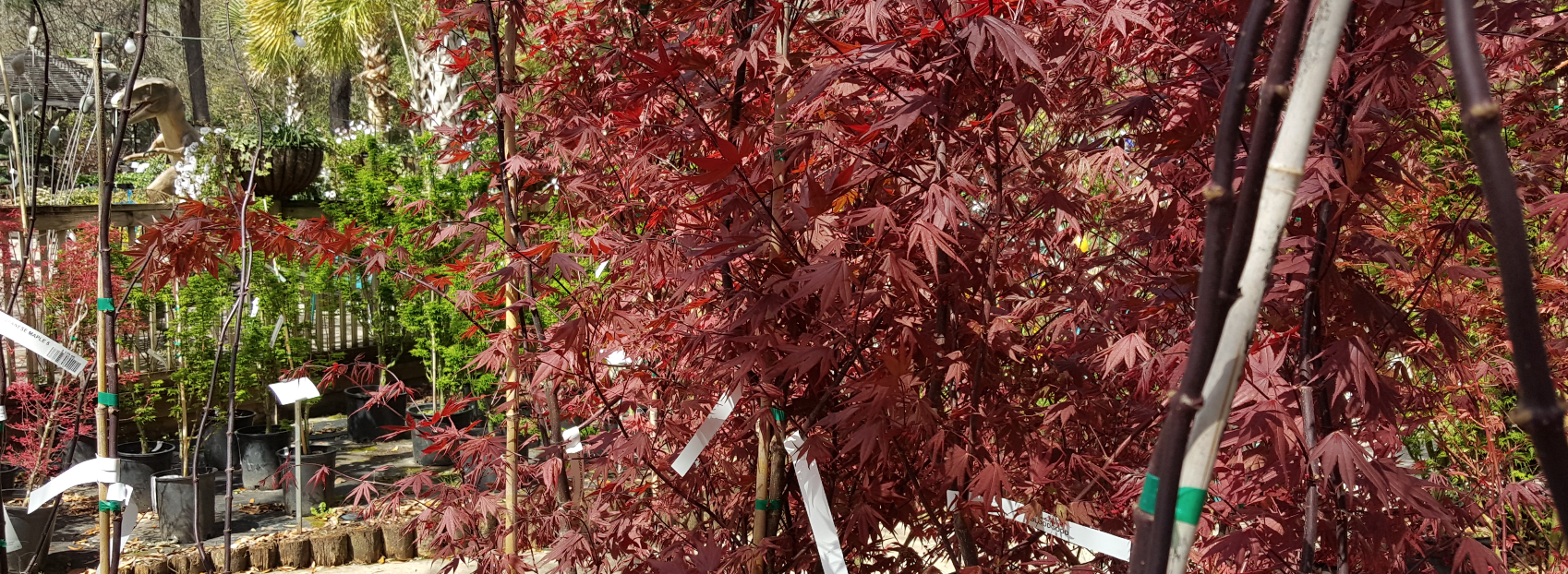
You Are Ready for Japanese Maples!
Japanese Maples are stunning, there’s just no way around it. If you need a special plant for the focal point of your outdoor space, there are few choices that will impress your guests as much as a Japanese Maple. They come in variations of growth habit and foliage color to meet any preference. But, perhaps for some reason you don’t have one yet? I get it, you’ve heard they can be fussy, and you need the greenest of thumbs to keep them alive. The truth is, Japanese Maples are some of the toughest plants I’ve grown. Whether you love crisp green leaves and gently weeping branches, bold purple color on stately upright trees, or eagerly anticipate the lively autumn colors each year, you can ensure success with these beautiful trees by following these simple guidelines for proper sun exposure, watering, and care.
Sun Exposure
Pick the right Japanese Maple for your sun exposure!
- For locations that receive full sun or afternoon sun, be sure to select upright growing varieties with palmate leaves. These are the leaves that resemble an open hand, with a solid center and radiating lobes. They will also grow happily in shadier spots, albeit with less red color in the summer.
- Weeping varieties, and those with lacey leaves, do best when protected from afternoon sun by structures or larger trees.
- Red leaf varieties will show more intense color and hold that color longer in sunnier spots. Although, you should avoid afternoon sun for lace leaf varieties. Morning and midday sun will impart dramatic foliage hues.
Water: The Magic Bullet
Water is the secret to a happy Japanese Maple!
- Japanese Maples cannot be allowed to dry out in their first few years after planting.
- Apply at least 3 gallons of water slowly and directly to the root ball every 2 days for the first spring and summer. Apply at least 3 gallons of water slowly and directly to the root ball every 4 days for the first fall and winter. Only rain over ¼ inch counts as a watering. The second year watering needs will reduce, water when leaves first show signs of wilting.
- As these trees establish, they become much more tolerant of intermittent water, but the first 1-2 years are absolutely critical.
- If you’re concerned about remembering to water, there are many products to help with this task! At Tallahassee Nurseries, we have a supply of simple timers for sprinklers, Soil Moist (granules added to the soil at planting that hold extra moisture), and water bags that attach to the tree and release their contents slowly.
- Watering any plant in a large container may be a little more complicated than it seems. Using a hose, start watering the container and keep watering until the water is flowing freely from the bottom. Take a 5 minute break, then repeat until the water flows from the bottom of the pot again. You must water containers twice to ensure good moisture absorption.
Care
MULCH, MULCH, MULCH!
- Maintain a thick and wide ring of any natural mulch: think wood chips, pine straw, pine bark, leaves. Start with a ring 6 feet across and increase the size as the tree grows.
- Add mulch yearly to maintain a depth of 4 inches.
- Mulch maintains consistent soil moisture, suppresses weeds, and keeps roots cool in summer.
- Japanese Maples require little feeding. Fertilize yearly in early spring with Plant Tone, available in the Garden Center at Tallahassee Nurseries.
If you follow this advice closely, your tree will thrive like you wouldn’t believe! And one missed watering here or there won’t be the end of your tree. Japanese Maples are strong and resilient. Even after decades of doing battle with bark-hungry squirrels, falling pine limbs, and unskillfully wielded branch saws, I’ve seen many an old Japanese Maple still put on a gorgeous show. Given their few simple requirements, Japanese Maples are long lived and strong works of art you’ll be able to enjoy for many years to come.


